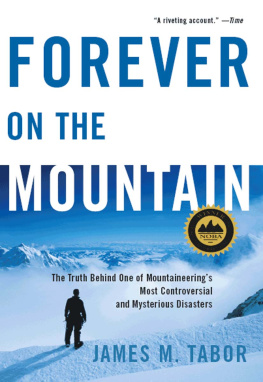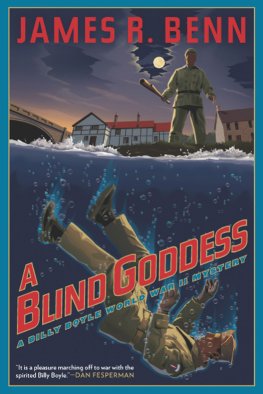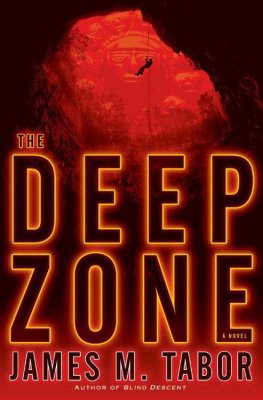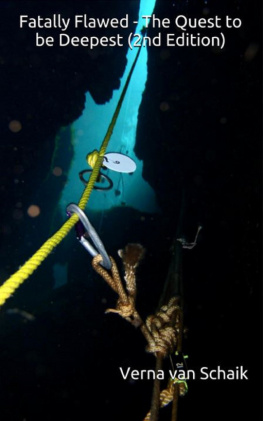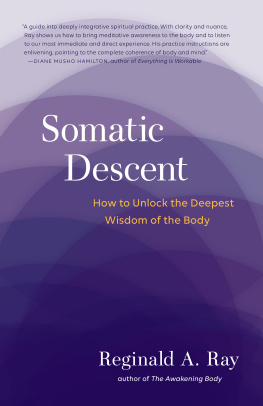James M. Tabor - Blind Descent: The Quest to Discover the Deepest Place on Earth
Here you can read online James M. Tabor - Blind Descent: The Quest to Discover the Deepest Place on Earth full text of the book (entire story) in english for free. Download pdf and epub, get meaning, cover and reviews about this ebook. year: 2010, publisher: Random House Publishing Group, genre: Science / History. Description of the work, (preface) as well as reviews are available. Best literature library LitArk.com created for fans of good reading and offers a wide selection of genres:
Romance novel
Science fiction
Adventure
Detective
Science
History
Home and family
Prose
Art
Politics
Computer
Non-fiction
Religion
Business
Children
Humor
Choose a favorite category and find really read worthwhile books. Enjoy immersion in the world of imagination, feel the emotions of the characters or learn something new for yourself, make an fascinating discovery.

- Book:Blind Descent: The Quest to Discover the Deepest Place on Earth
- Author:
- Publisher:Random House Publishing Group
- Genre:
- Year:2010
- Rating:3 / 5
- Favourites:Add to favourites
- Your mark:
- 60
- 1
- 2
- 3
- 4
- 5
Blind Descent: The Quest to Discover the Deepest Place on Earth: summary, description and annotation
We offer to read an annotation, description, summary or preface (depends on what the author of the book "Blind Descent: The Quest to Discover the Deepest Place on Earth" wrote himself). If you haven't found the necessary information about the book — write in the comments, we will try to find it.
James M. Tabor: author's other books
Who wrote Blind Descent: The Quest to Discover the Deepest Place on Earth? Find out the surname, the name of the author of the book and a list of all author's works by series.
Blind Descent: The Quest to Discover the Deepest Place on Earth — read online for free the complete book (whole text) full work
Below is the text of the book, divided by pages. System saving the place of the last page read, allows you to conveniently read the book "Blind Descent: The Quest to Discover the Deepest Place on Earth" online for free, without having to search again every time where you left off. Put a bookmark, and you can go to the page where you finished reading at any time.
Font size:
Interval:
Bookmark:
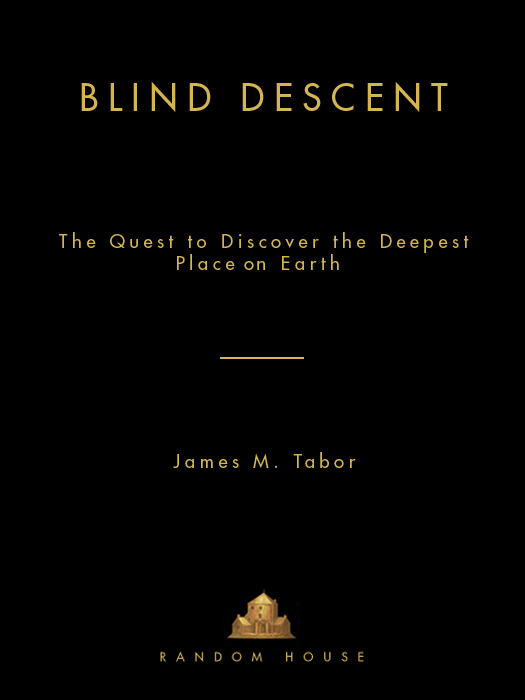
ALSO BY JAMES M. TABOR
Forever on the Mountain
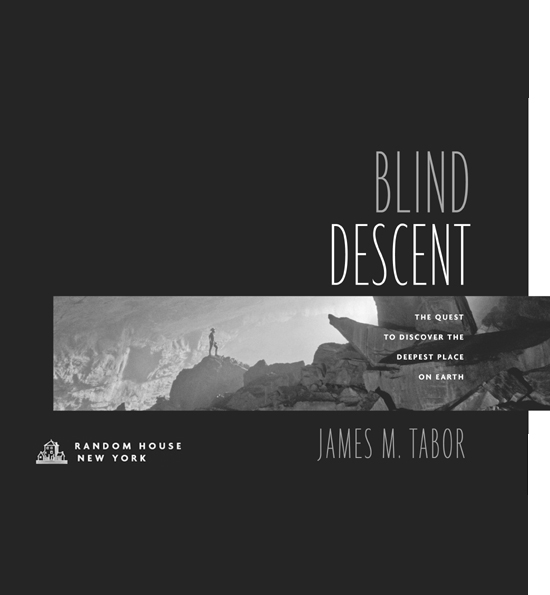
This book is dedicated to the tribe.
Welcome to the world of the deepwhere the strangest things are the people you meet.
Hazel Barton,
microbiologist and cave explorer
There is nothing more powerful than this attraction towards an abyss.
Jules Verne,
Journey to the Center of the Earth
PART ONE
PART TWO
PART THREE
As the fifteenth century began, we believed, absolutely, that the earth was flat.
As the twenty-first century began, we believed with equal certainty that every one of the earths great discoveries had been made. Almost a century had passed since Peary first trod the North Pole and Amundsen the South. Hillary and Norgay summited Mount Everest in 1953, Piccard and Walsh dove the deepest ocean in 1960. Armstrong and Aldrin walked on the moon in 1969. We played golf and drove a dune buggy there not long after. Surely that tolled discoverys death knell.
But flat-earthers were wrong, and so were those who had prematurely mourned the death of discovery. When the third millennium rolled around, one last great terrestrial discovery did still await: the deepest cave on earth. The supercave.
Extreme cave exploration is just as exciting, difficult, and deadly as any pioneering feat in mountains, oceans, polar regions, or even off-planet. When he learned about supercaves, Buzz Aldrin said, Id thought there could be no environment as hostile as the lunar surface. No more. Thus Aldrin would not be surprised, nor should anyone be, that we stood on top of the world in 1953, but the year 2000 came and went without our having found the bottom of it.
Alien, bizarre, and deadly they most certainly are, but supercaves are not only about adventure. Bill Stone, one of the two great supercave explorers featured in this book, bristled when an interviewer for NationalGeographic.com asked how he would describe his brand of adventure.
Lets first dispense with the adventure label, Stone shot back, adding that modern, high-tech exploration, which is what I do, is quite different. The objective is to advance our knowledge of the frontiers by bringing back new data. Science, in other words, and, indeed, caves are scientific cornucopias as well, furthering research in areas as diverse as pandemic prevention, how the earth was formed, extraterrestrial lifes origins, new petroleum reserves, and Mars missions.
And yet, the search for the deepest cave on earth is the greatest epic of discovery and adventure youve never heard of. Despite its drama, danger, and valuable contributions to science, extreme cave exploration remains largely unheralded. In part this is because we prefer our heroes clean and beautiful. Think of our grandest exploration icon, Neil Armstrong: immaculate and pure, his knightly suit burning white against the gray moon and black space. Caving, on the other hand, is by its very nature dirty, dark, and wet.
But there is something else. Weve had photographs of mountaineers since the nineteenth century and moving pictures of them almost as long. Good underwater footage from the 1940s exists. And we watched Neil Armstrong actually take his great first step. But for most of its long history, cave exploration remained out of our collective sight and mind. Only quite recently have sophisticated batteries and digital recording technology made it possible to take cameras far down into supercaves, which are thousands of feet deep and many miles long. So while their mountaineering, aquanaut, and astronaut counterparts basked in the limelight, extreme expeditionary cave explorers labored in the dark both beneath the earths surface and above it.
In fact, the subterranean world remains the greatest geographic unknown on this planetcalled the eighth continent by some. Mountains, ocean depths, the moon, and even Martian scapes can beand have beenrevealed and explored by humans or our robotic surrogates. Not so caves. They are the sole remaining realm that can be experienced only firsthand, by direct human presence.
By the turn of the twenty-first century, three crucial things had become clear about the last great terrestrial discovery. First, it probably would be made within a decade. Second, it would almost certainly be made in one of two places: the Abkhazia region of the Republic of Georgia or the state of Oaxaca, in southern Mexico. Finally, one of two men would lead the discovery team, which would earn him a place beside the likes of Amundsen and Hillary in the pantheon of exploration. They were the Ukrainian Alexander Klimchouk and the American Bill Stone, both of whom had devoted their lives to the search for the bottom of the world.
Caves invite juxtapositions of opposites: light and dark, surface and subterranean, safety and terror. Alexander Klimchouk and Bill Stone are both in their fifties, but otherwise they are about as different as men can be, fitting nicely into that list of opposites. Klimchouk is short and slight. Stone is towering and muscular. Klimchouk is quiet, self-effacing, and avuncular. Stone is bold, brash, and commanding. Klimchouk has been happily married to the same woman for decades. Stone divorced in 1992 and has since had a series of relationships with strong, attractive, accomplished outdoorswomen. He is currently engaged to the cave explorer Vickie Siegel, with plans to marry in May 2010. They are alike, however, in two key ways: both are scientists and explorers in the classic tradition of Magellan, Amundsen, and Armstrong, willing to risk everything, including their lives and those of others, for the ultimate discovery.
Other explorers and scientists understood the historic nature of such a discovery. They also understood that, for the reasons noted above, it might go relatively unnoticed, which would be doubly tragic. First, because whoever risks everything for such a goal and accomplishes it deserves all the recognition and reward we can bestow. But second, and perhaps more important, this discovery would be not only monumental but sad, marking, as it would, the end of humankinds millennia-old search for the earths ultimate secrets. So excitingand perhaps unnervingwas the prospect of this sagas finale that normally staid National Geographic magazine had to borrow a phrase from Jules Verne to describe it: The Race to the Center of the Earth.
As the new millennium dawned, the stage was thus set for an exploration drama unlike any since Roald Amundsen and Robert Falcon Scott competed, head-to-head, with results both horrible and historic, for the South Pole.
This book is the story of the race to make the last great discovery, and of the men and women who won and lost it.
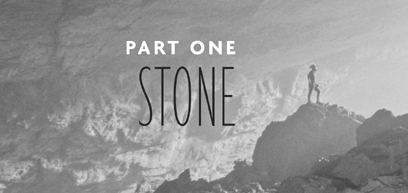
Rule No. 1: Nothing is impossible (unless it violates the laws of physics).
Rule No. 2: Bend the laws of physics if you can.
Bill Stone
STOP.
We have a fatality.
BILL STONE, HALF A MILE DEEP and three miles from the entrance in a Mexican supercave called Cheve, did stop. Red-and-white plastic survey tape hung across the narrow passage he had been ascending. The message, scrawled on notebook paper, was affixed to the tape at chest level, where it could not be missed. Afloat in the caves absolute darkness, the white paper burned so brightly in the beam of Stones headlamp that it almost hurt his eyes. The time was shortly before midnight on Friday, March 1, 1991, though that made no particular differenceit was always midnight in a cave.
Font size:
Interval:
Bookmark:
Similar books «Blind Descent: The Quest to Discover the Deepest Place on Earth»
Look at similar books to Blind Descent: The Quest to Discover the Deepest Place on Earth. We have selected literature similar in name and meaning in the hope of providing readers with more options to find new, interesting, not yet read works.
Discussion, reviews of the book Blind Descent: The Quest to Discover the Deepest Place on Earth and just readers' own opinions. Leave your comments, write what you think about the work, its meaning or the main characters. Specify what exactly you liked and what you didn't like, and why you think so.

